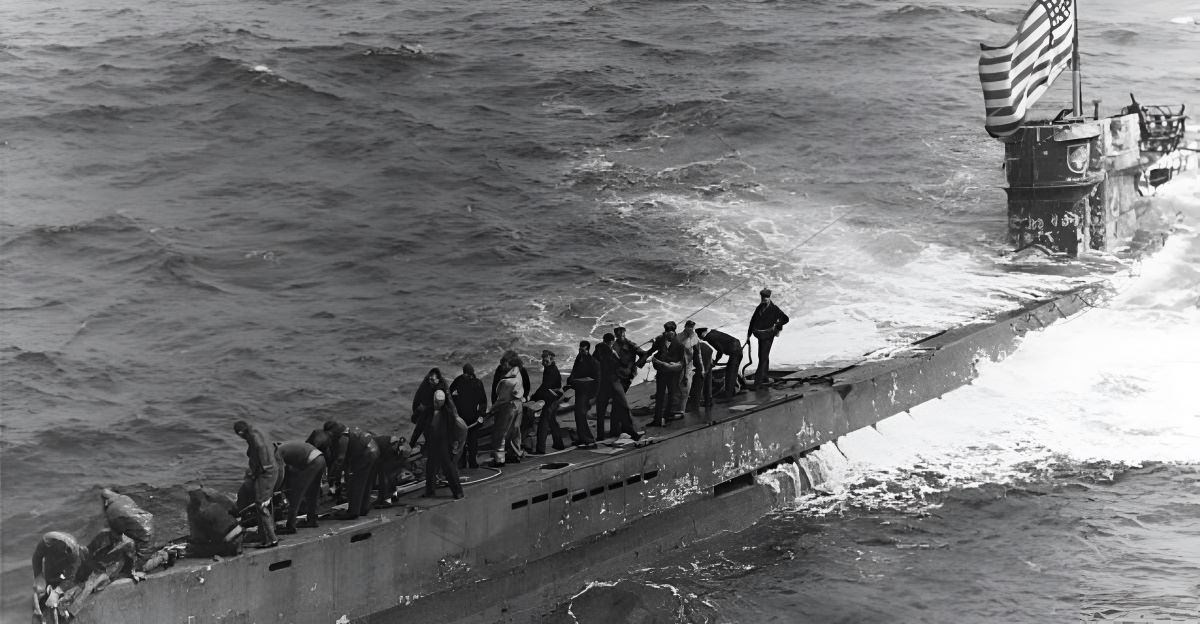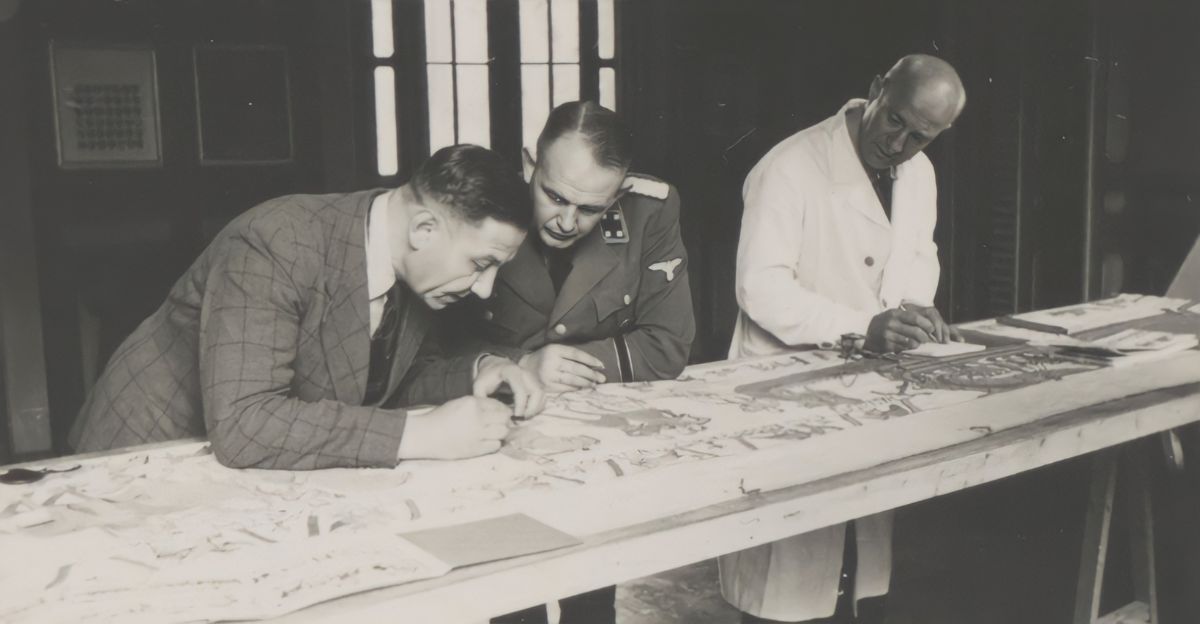
Bronze Age cuirasses are among Europe’s rarest archaeological finds, with only approximately 30 finds documented across the entire continent, according to European archaeological surveys.
Czech metal detectorists working near Brno in 2023 initially found what appeared to be damaged bronze fragments among ritual deposits. At first, this discovery didn’t seem unprecedented. However, advanced 3D scanning revealed intricate decorative patterns, suggesting a rarer find.
Historical Context

During the Late Bronze Age, bronze armor was considered the ultimate status symbol for warrior elites. According to the Cambridge World History of Violence, “Multiple layers of linen found in a chamber tomb at Mycenae are the best surviving evidence we have for using organic armour in this region.”
Most warriors relied on perishable organic materials like leather and linen for protection, which often didn’t survive for modern archaeologists to find.
European Networks

The Smithsonian Magazine reports, “Bronze armor made by skilled craftsmen was reserved for elite warriors.” Archaeological evidence shows that, during the Bronze Age, Europe operated sophisticated trade networks spanning the Atlantic to the Black Sea.
These networks facilitated the exchange of materials, techniques, and artistic styles. The discovery connects Central Europe to established armor-producing regions like Greece’s Dendra site and France’s Saint-Germain-du-Plain, where complete bronze cuirasses have been found. To make bronze armor even harder to find, it was sometimes used in ritualistic practices that the armor didn’t survive.
Ritual Practices

Bronze Age communities practiced deliberate destruction of valuable military equipment before burial in ritual deposits.
Oxford Archaeological research shows this widespread European phenomenon involved systematically damaging costly bronze artifacts to sacrifice them to deities or ancestral spirits.
Digital Reconstruction

Tby Brno City Museum archaeologist Aleš Navrátil, “Using 3D scanning, we managed to digitally ‘unpack’ the bent sheet metal and identify its shape and decor.”
The fragments are extremely old, dating to approximately 1200 BCE, the late Bronze Age period traditionally associated with the Trojan War era. This represents only the second Bronze Age cuirass discovery in the Czech Republic’s history.
International Significance
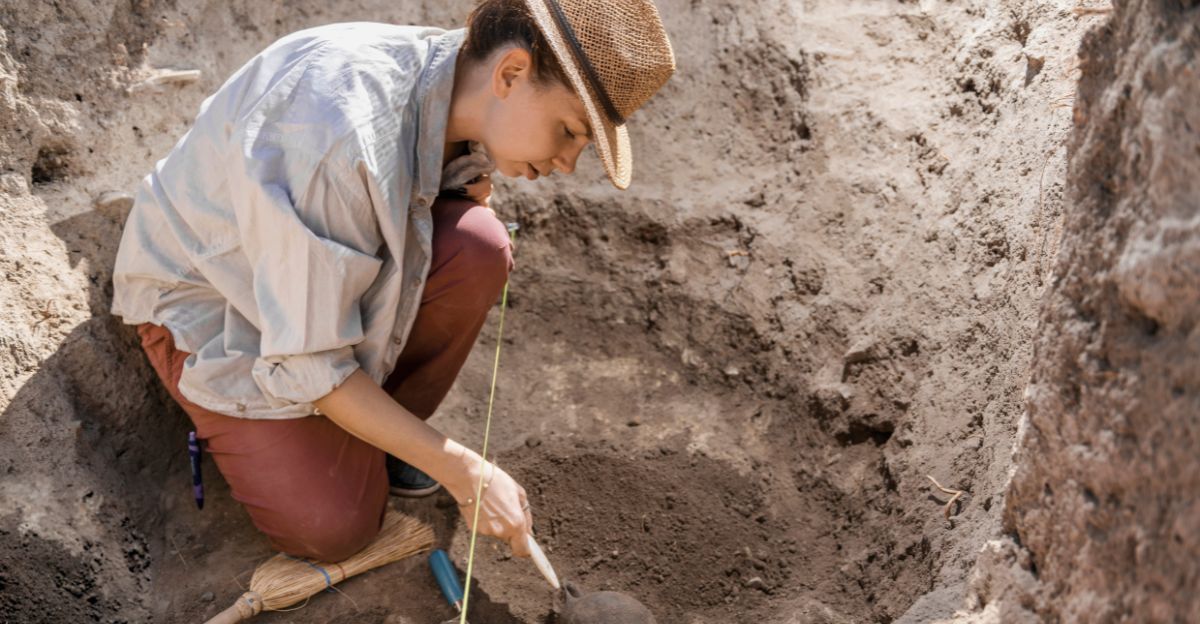
Museum director Zbyněk Šolc emphasized the discovery’s importance, stating, “This find confirms the importance of long-term cooperation between experts and the public, which is crucial for our museum.”
The collaboration between professional archaeologists and amateur metal detector communities exemplifies successful citizen science partnerships transforming European archaeology.
Archaeological Methods
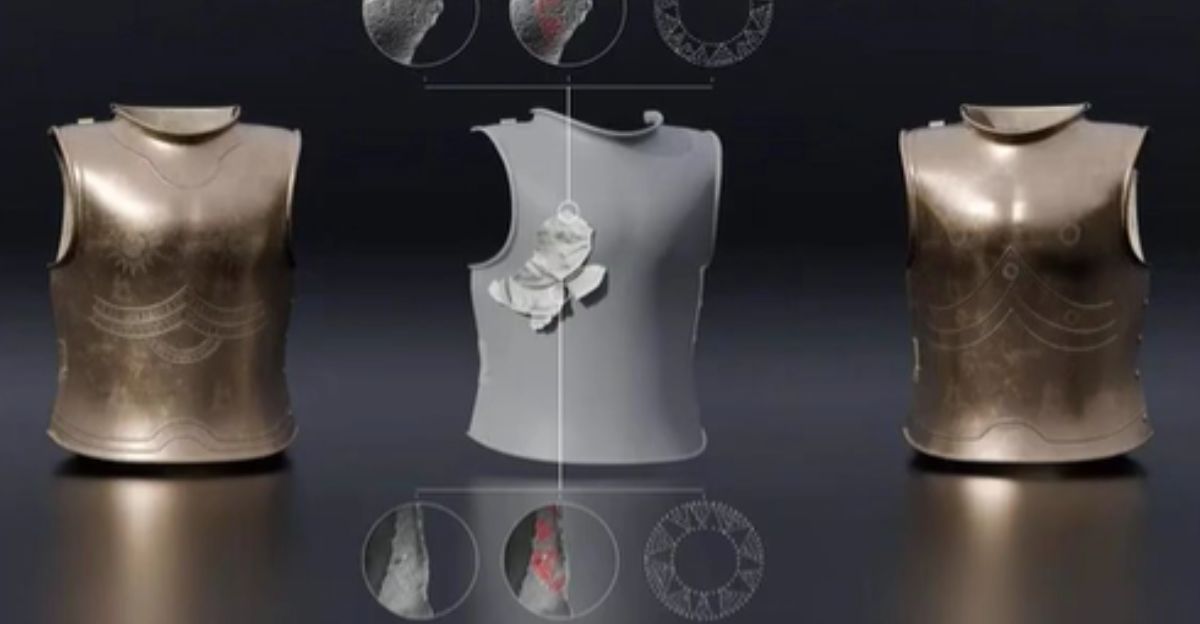
Advanced imaging techniques have changed the game regarding Bronze Age armor studies, enabling virtual reconstructions without posing the risk of damaging delicate artifacts.
The Czech discovery benefits from interdisciplinary collaboration between Brno City Museum and Masaryk University’s Department of Archaeology and Museology.
Geographic Distribution

The armor was found near Brno and approximately 1,456 kilometers from ancient Troy’s archaeological site in Hisarlik, Turkey.
This distance demonstrates the extensive geographic spread of Late Bronze Age cultural connections. Recent research suggests Central European warriors may have participated in eastern Mediterranean conflicts during this period.
Legal Framework
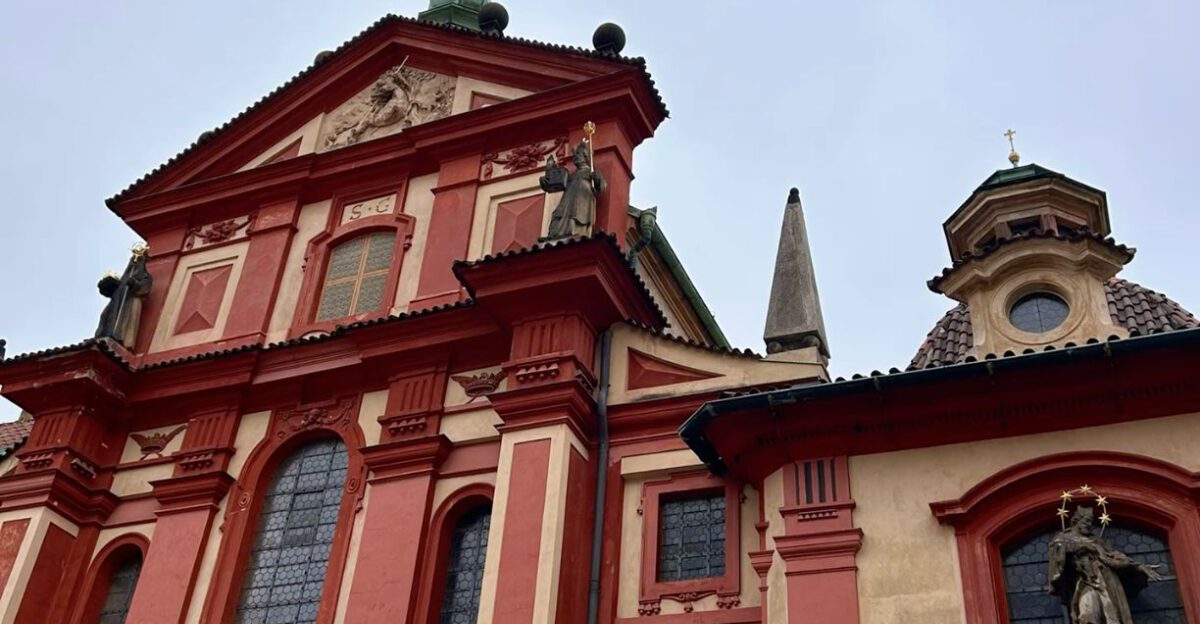
The Czech Republic’s State Monument Care Act governs archaeological discoveries, requiring finds to be deposited in museums regardless of who discovers them.
According to Cambridge research on Czech metal detecting, “Archaeological finds are subject to various ownership rules based on the circumstances, with the municipality, region, or state claiming ownership.”
Academic Research

Masaryk University’s archaeology department offers specialized Bronze Age studies, including courses on “Bronze Age in Central Europe” and advanced archaeological methods.
The institution maintains international research partnerships and operates sophisticated analytical facilities. According to university records, students participate in “foreign excavations” and research projects throughout Europe.
Conservation Challenges
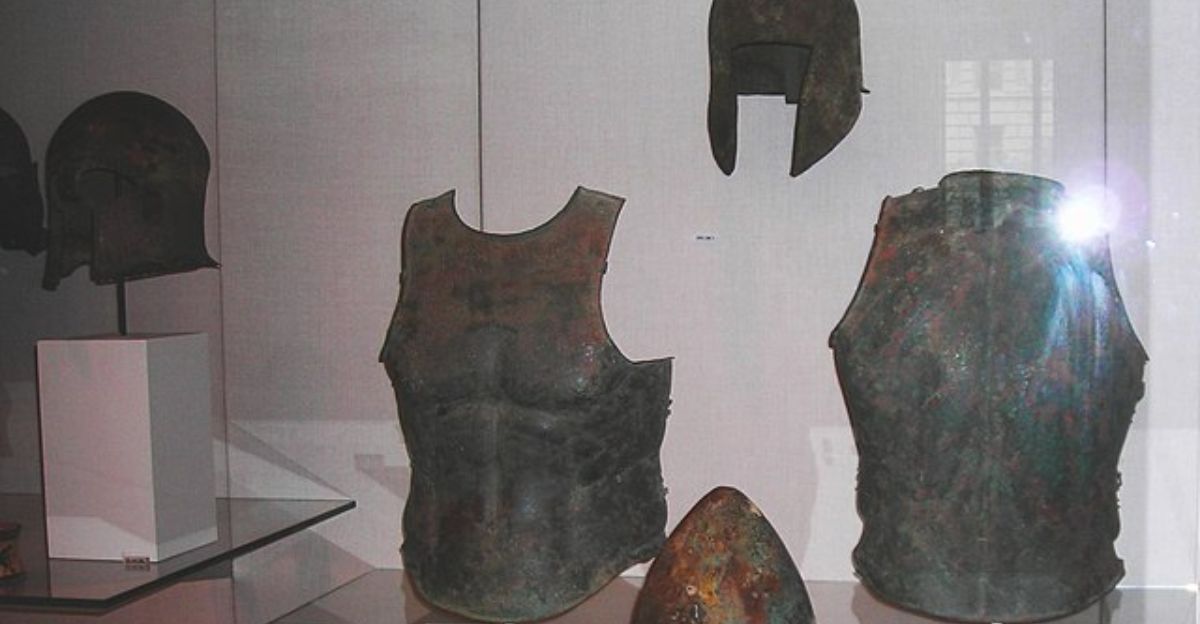
UNESCO reports that antiquities trafficking represents “the illicit trade in cultural property” with estimates ranging “from $225 million to $3 billion annually.” Cultural heritage sites face ongoing threats from illegal metal detecting and artifact theft.
Professional archaeologists must balance public education with security concerns, often withholding precise site locations while sharing research findings.
Museum Exhibition
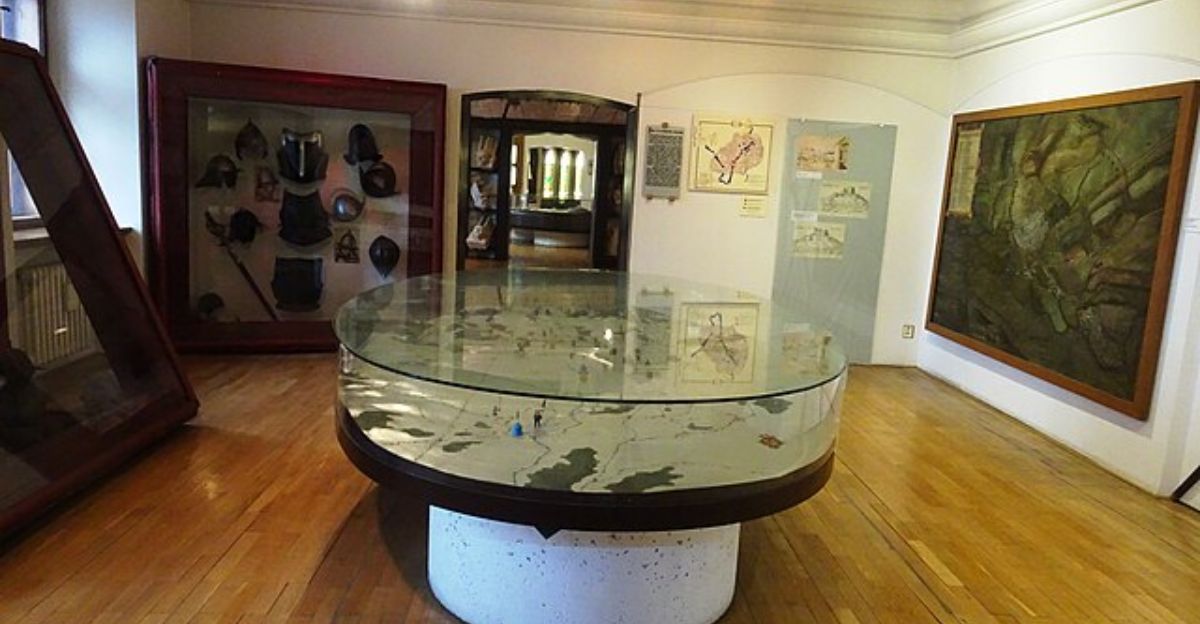
The Brno City Museum plans a comprehensive Bronze Age warfare exhibition featuring the armor discovery. According to Art Net News, museum director Zbyněk Šolc stated that public engagement is “crucial” for archaeological preservation, noting, “Thanks to it, we can discover and protect valuable artifacts.”
The institution manages multiple cultural sites, including Špilberk Castle and UNESCO World Heritage villa Tugendhat. Enhanced security and climate control systems support rare artifact preservation.
Scientific Analysis
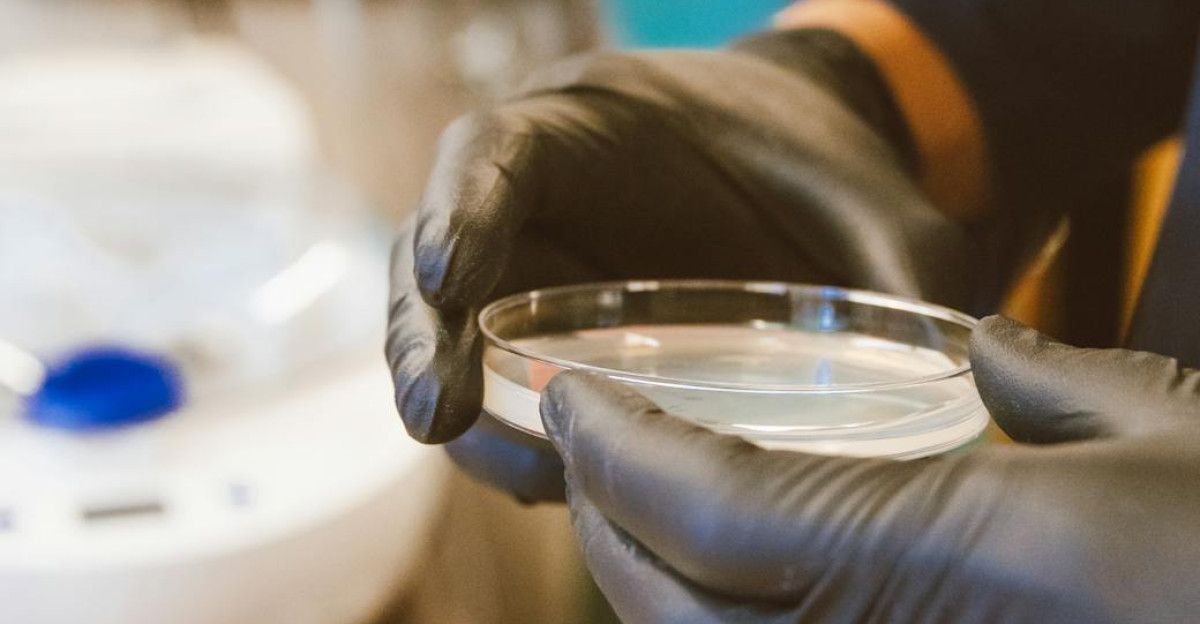
The discovery underwent extensive analysis, including microscopic examination and compositional studies. According to Live Science, “It was the ornament, recognized under a microscope, that confirmed the folded piece of bronze had once been part of a protective chest plate.”
Modern archaeological techniques enable detailed study of ancient manufacturing processes, trade networks, and ritual practices.
European Context

The discovery adds to a growing Bronze Age military equipment database across Europe. According to Austrian Academy research, Bronze Age armor distribution “ranges from Iberia in the west to Cyprus in the east and from Sicily in the south to Sweden in the north.”
This geographic spread demonstrates sophisticated cultural networks and shared military technologies. The Czech find connects Central European archaeology to broader Mediterranean Bronze Age developments.
Future Research
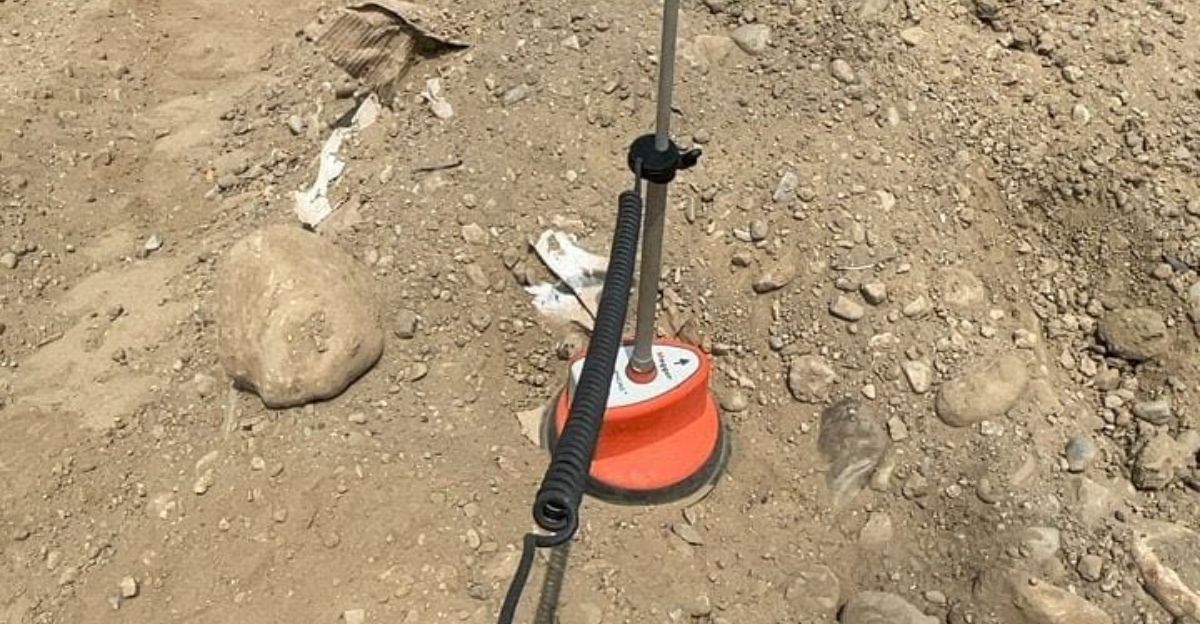
Climate change and development pressure threaten European archaeological sites, making discoveries like the Czech armor increasingly valuable. The success of professional-amateur partnerships may serve as a model for other regions.
Advanced metal detection technology enables rapid site surveys while facilitating illegal artifact hunting. Whether similar Bronze Age armor discoveries await detection in Central Europe remains an open question for future archaeological research.

